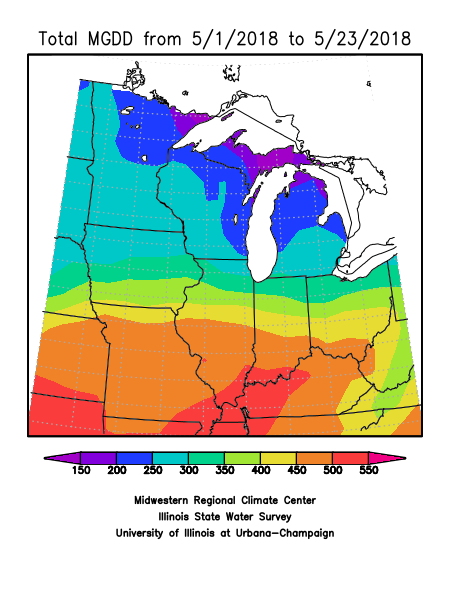May 25, 2018

In this first report of the 2018 crop season, Winfield United agronomists from eight Midwest states tell Corn+Soybean Digest the challenging journey of farmers battling early cold wet weather, then pushing hard to get the crop planted. While overall planting is hitting the national averages, the upper Midwest still lags behind as we head into Memorial weekend.
Many agronomists are noting Growing Degree Units ramping up quickly with the recent heat, so keeping on top of weeds right now with residual herbicides is key to hopefully reduce the reliance on post control. Scouting is also recommended to identify early-season pests like cutworms that can be treated before robbing yields. In wet areas, some agronomists are recommending tissue/soil testing corn around V5 to ensure corn has adequate nitrogen. And if you’re planning on applying dicamba over soybeans, pay close attention to all label requirements and use approved drift-reduction agents.
Here’s a brief synopsis by state. For more details, view the gallery.
Illinois: Late start, but good weather has both crops emerging and developing quickly, along with weeds.
Indiana: Planting ahead of five-year average, but strong weed control program needed.
Iowa: A mixed bag of planting dates, cool/wet soil issues, northern areas lagging behind, but recent warmth boosting planting and emergence.
Michigan: Planting on track with five-year average, but cooler temperatures have slowed germination and emergence.
Minnesota: Big mid-April blizzard and continued cold soils and rains slowed planting, but recent warmth finally getting seed in the ground. Nitrogen needs must be watched.
Ohio: Wet weather has farmers behind in both corn and soybean planting, with big temptations to try and plant wet fields.
South Dakota: Despite cool, wet April, recent warmth has planting near five-year average. Next up, weeds and monitoring nitrogen.
Wisconsin: Rains have kept planting minimal in the central part of the state, and lower than average temperatures are keeping weeds at bay, until the warmth hits.
About the Author(s)
You May Also Like




